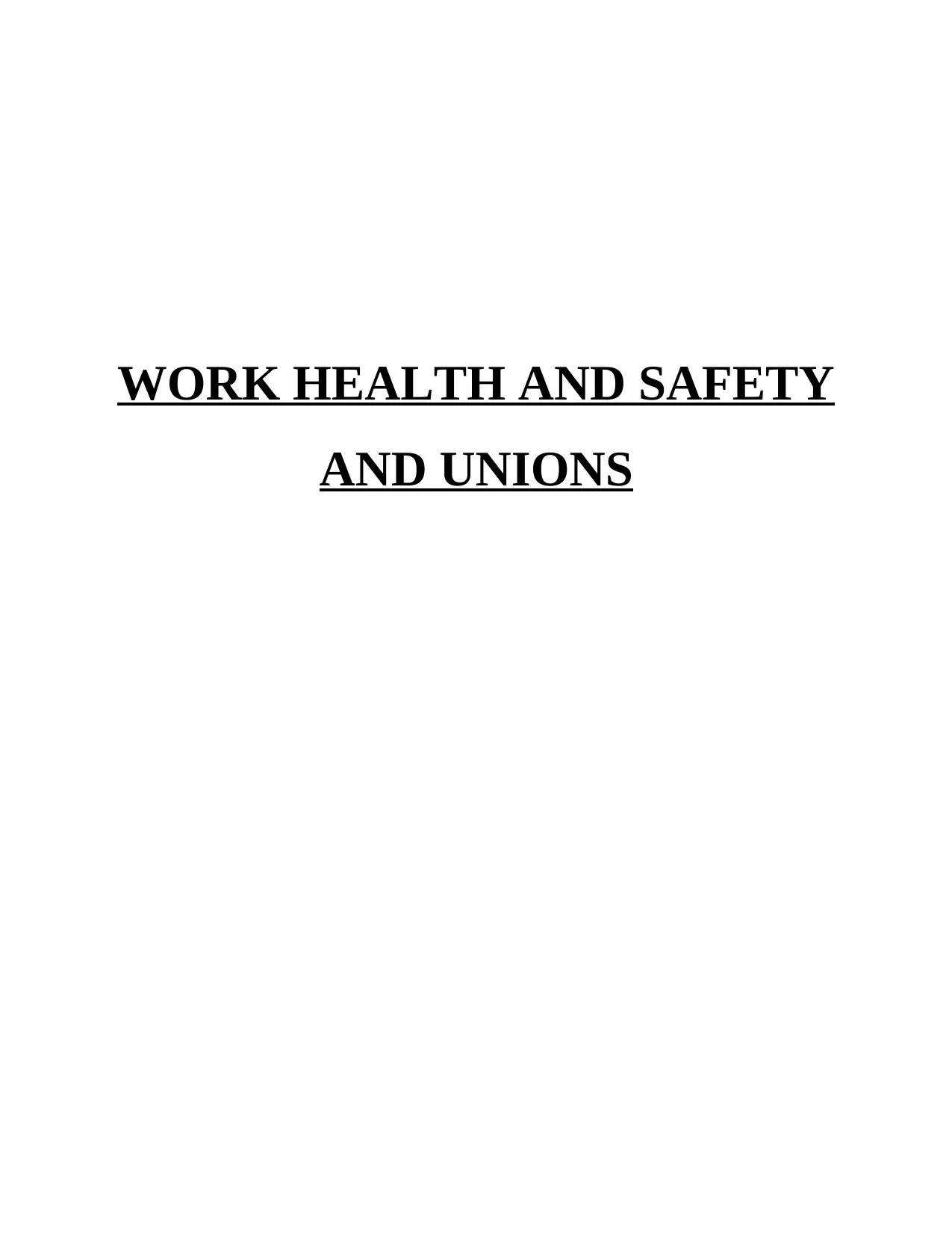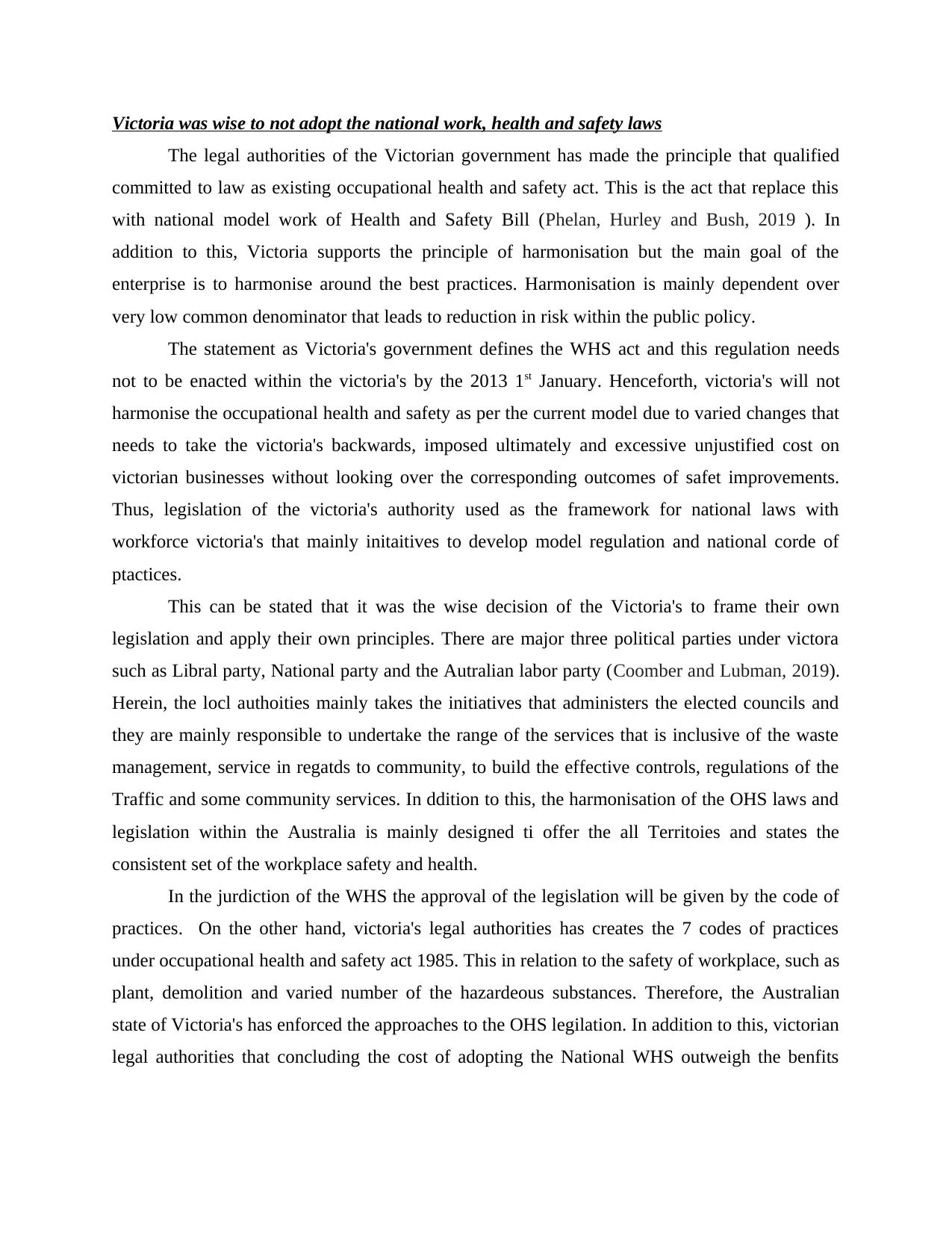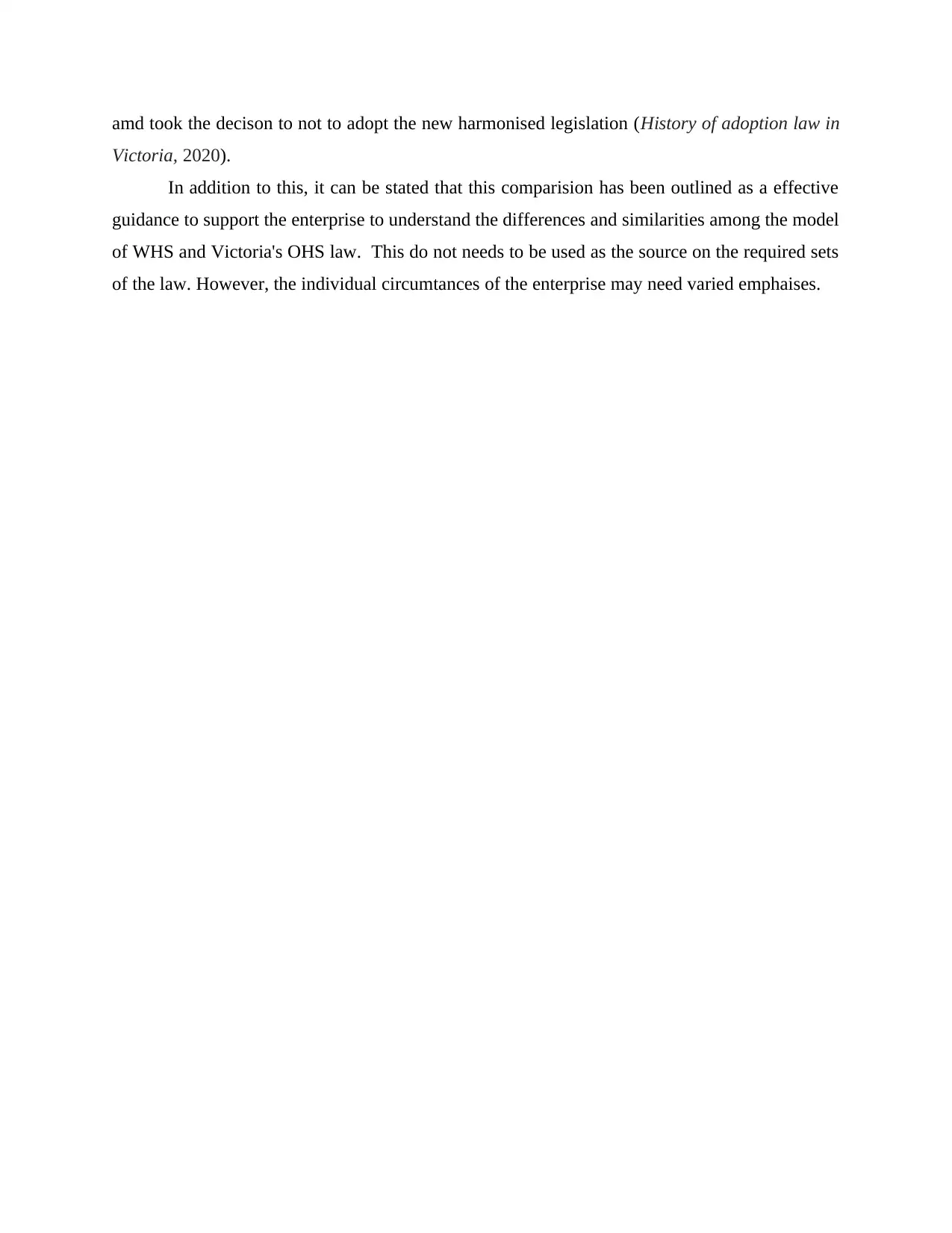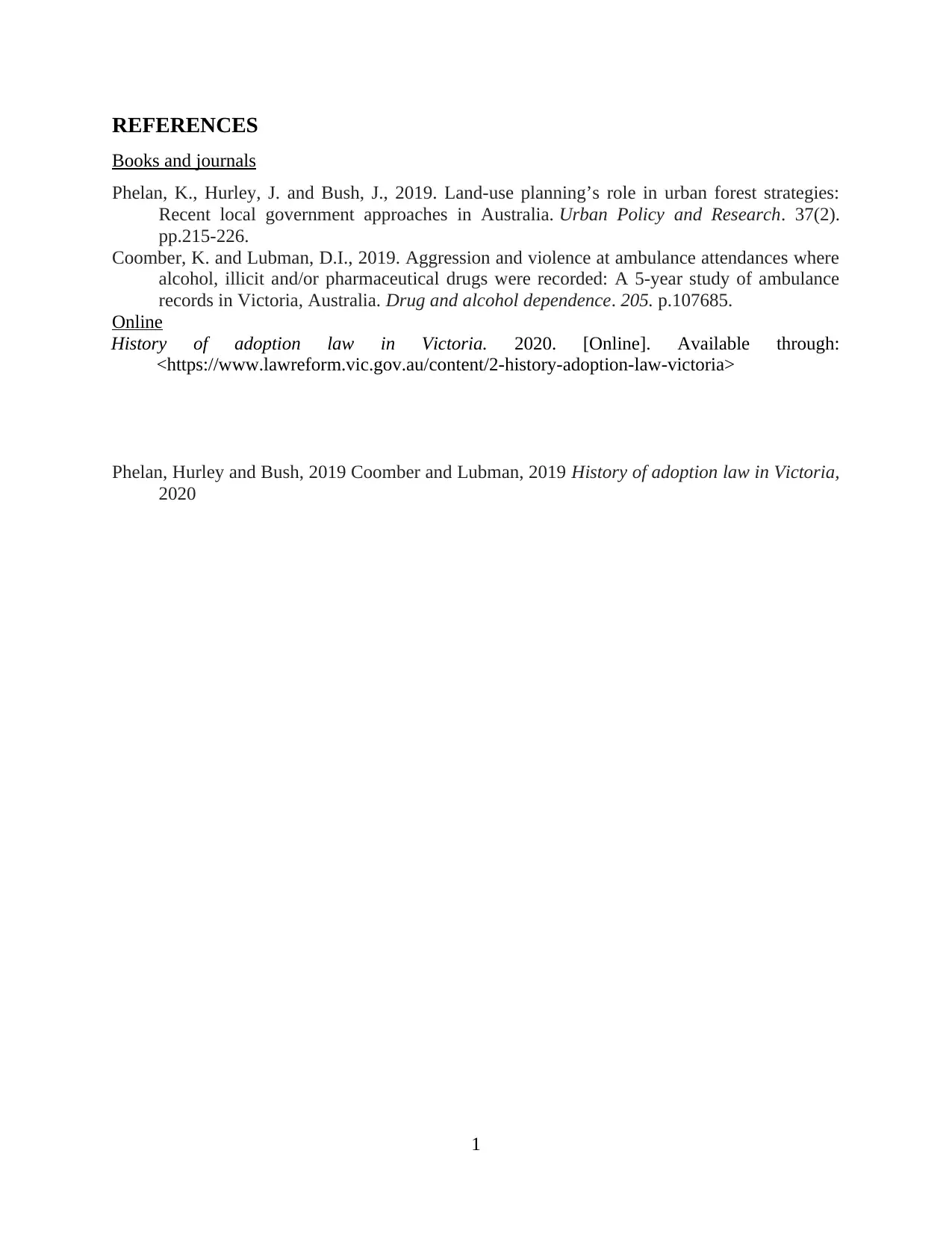Evaluating Victoria's Decision on National Work Health and Safety Laws
VerifiedAdded on 2023/01/13
|5
|723
|82
Essay
AI Summary
This essay evaluates the statement 'Victoria was wise to not adopt the national work, health and safety laws.' It examines Victoria's decision to not adopt the harmonized WHS legislation, driven by political factors. The essay explores the arguments for and against this decision, considering the perspectives of various stakeholders such as employer associations and trade unions. It also analyzes the impact of Victoria's independent approach to WHS legislation, comparing it with the national model. The essay discusses the legal authorities of the Victorian government, the role of political parties, and the importance of harmonisation versus best practices. It concludes by assessing whether Victoria's decision was beneficial, considering costs, safety improvements, and the overall effectiveness of the state's OHS legislation. The references include books, journals, and online resources related to the topic.
1 out of 5











![[object Object]](/_next/static/media/star-bottom.7253800d.svg)